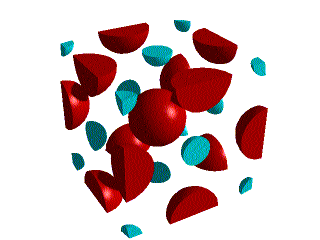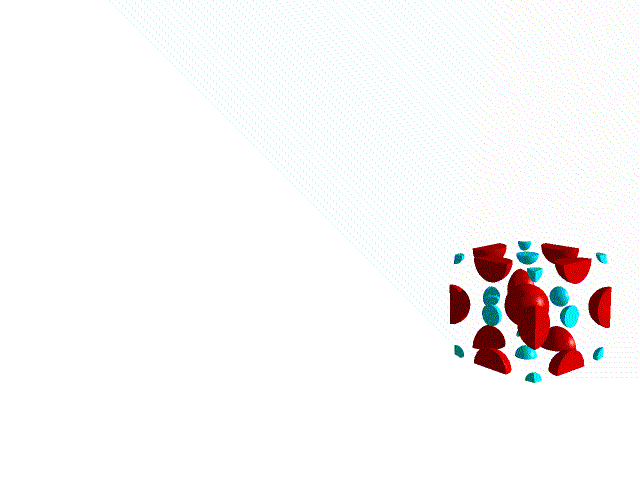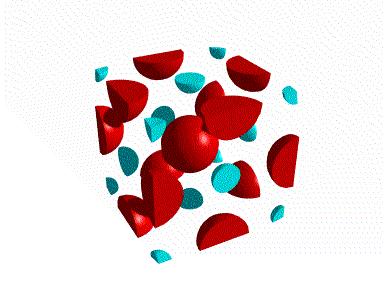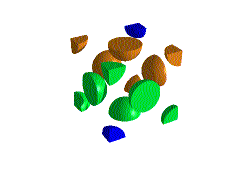
SODIUM CHLORIDE



Sodium chloride also crystallizes in a cubic lattice, but with a
different unit cell. (The Na+ are blue and the Cl-
are red).

Click on the unit cell above to explore it in VRML.
These stack so:

Click on the image below to view the NaCl lattice structure in
horizontal and vertical rotation.



However, the tightly-packed structures make it difficult to view
the interior relationships.
The same structure, but with the ions moved further apart allows
the interior to be viewed.
Click on the image below to explore the open structure in VRML.

If we take the NaCl unit cell and remove all the red Cl ions, we
are left with only the blue Na. If we compare this with the fcc / ccp unit
cell, it is clear that they are identical. Thus,
the Na is in a fcc sublattice.


Since the repetition patterns of Na and Cl are the same in the lattice,
the Cl sublattice must also be fcc / ccp. Recall that
there may be more than one way to divide a lattice into unit cells. Although
it may not be obvious, the red Cl's represent a different fcc / ccp unit
cell.
Notice that there are 6 Cl surrounding the Na, and 6 Na around each
Cl. We can look at the NaCl as made up of fcc / ccp lattices interpenetrating.
The Na's occupy the octahedral sites in the Cl sublattice, and the Cl's
occupy the octahedral sites in the Na sublattice.
Click
here to go to the next page.

Structure of Crystals
Crystal Lattices
Unit Cells
From Unit Cell to Lattice
From Lattice to Unit Cell
Stoichiometry
Packing & Geometry
Simple Cubic Metals
Close Packed Structures
Body Centered Cubic
Cesium Chloride
 Sodium
Chloride
Sodium
Chloride
Rhenium Oxide
Niobium Oxide
Except as otherwise noted, all images, movies and
VRMLs are owned and copyright  by
by
Barbara L. Sauls and Frederick C. Sauls 2000.
Contact the owners for individual permission
to use. blsauls@kings.edu





